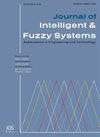基于信息过滤网络GRA-LoGo模型的股票价格预测
IF 1
4区 计算机科学
Q3 COMPUTER SCIENCE, ARTIFICIAL INTELLIGENCE
引用次数: 0
摘要
新冠肺炎疫情引发的股市大幅波动,可能对经济产生巨大而持久的负面影响。在这项工作中,我们提出了一种新的方法来研究这对中国医疗股票市场的影响。我们使用三角最大过滤图(TMFG)来检查股票网络结构的变化,该图计算速度更快,更适合于庞大的数据集。此外,我们开发了LoGo模型,该模型结合了本地-全球方法的构建,用于预测中国医疗股票市场的股价。除了传统的预测指标外,我们还将每日新增感染人数作为反映COVID-19影响的额外预测指标。我们选择2019-2020年期间的数据,并将其分为两个数据集:一个是COVID-19期间的数据集,另一个是COVID-19之前的数据集。首先,我们计算股票之间的灰色相关系数,而不是标准相关系数。我们使用这些系数来构建TMFG,使我们能够确定哪些股票发挥了主导作用。随后,我们选取了6只股票建立价格预测模型。与LSTM和SVR模型相比,LoGo模型具有更高的准确率,平均准确率为71.67%。Logo模型的执行速度比SVR模型快200倍,比LSTM模型快50倍。本文章由计算机程序翻译,如有差异,请以英文原文为准。
Forecast stock price based on GRA-LoGo model of information filtering networks
The considerable fluctuation of the stock market caused by COVID-19 tends to have a tremendous and long-lasting adverse impact on the economy. In this work, we propose a novel methodology to investigate this impact on the Chinese medical stock market. We examine changes in the stock network structure using the Triangulated Maximally Filtered Graph (TMFG), which is computationally faster and more adaptable to enormous datasets. Additionally, we develop the LoGo model, which combines a local-global approach in its construction, to predict the stock prices of the Chinese medical stock market. In addition to traditional predictors, we incorporate daily new infected numbers as an additional predictor to reflect the impact of COVID-19. We select data from the 2019-2020 period and divide it into two datasets: one for the period during COVID-19 and another for the period before COVID-19. Firstly, we compute the grey correlation coefficients between stocks instead of standard correlation coefficients. We use these coefficients to build the TMFG, enabling us to identify which stocks played the leading roles. Subsequently, we choose six stocks to build the price prediction models. Compared with the LSTM and SVR models, the LoGo models demonstrates higher accuracy, achieving an average accuracy of 71.67 percent. Furthermore, the execution time of the Logo models is 200 times faster than that of the SVR models and 50 times faster than that of the LSTM models.
求助全文
通过发布文献求助,成功后即可免费获取论文全文。
去求助
来源期刊

Journal of Intelligent & Fuzzy Systems
工程技术-计算机:人工智能
CiteScore
3.40
自引率
10.00%
发文量
965
审稿时长
5.1 months
期刊介绍:
The purpose of the Journal of Intelligent & Fuzzy Systems: Applications in Engineering and Technology is to foster advancements of knowledge and help disseminate results concerning recent applications and case studies in the areas of fuzzy logic, intelligent systems, and web-based applications among working professionals and professionals in education and research, covering a broad cross-section of technical disciplines.
 求助内容:
求助内容: 应助结果提醒方式:
应助结果提醒方式:


